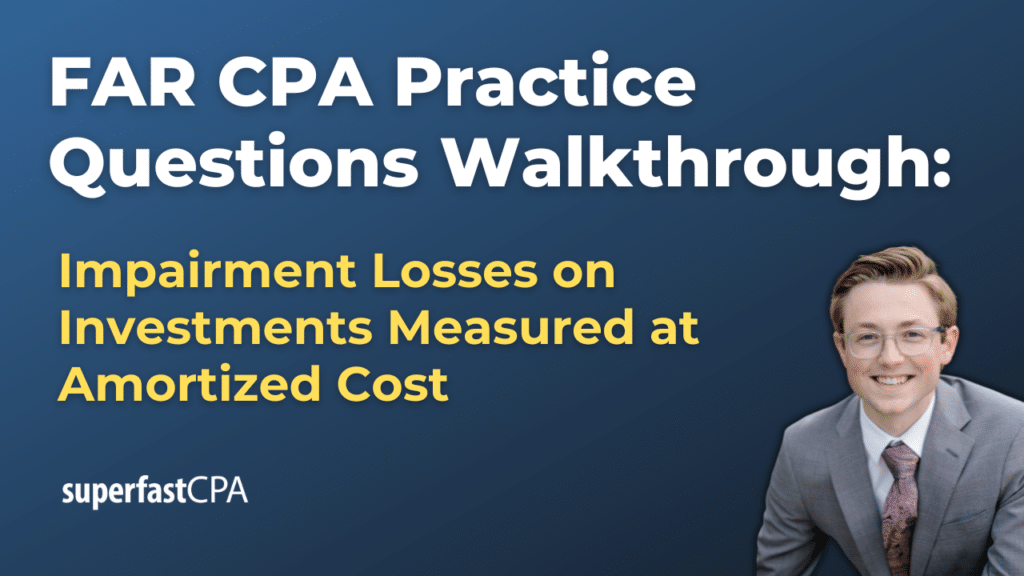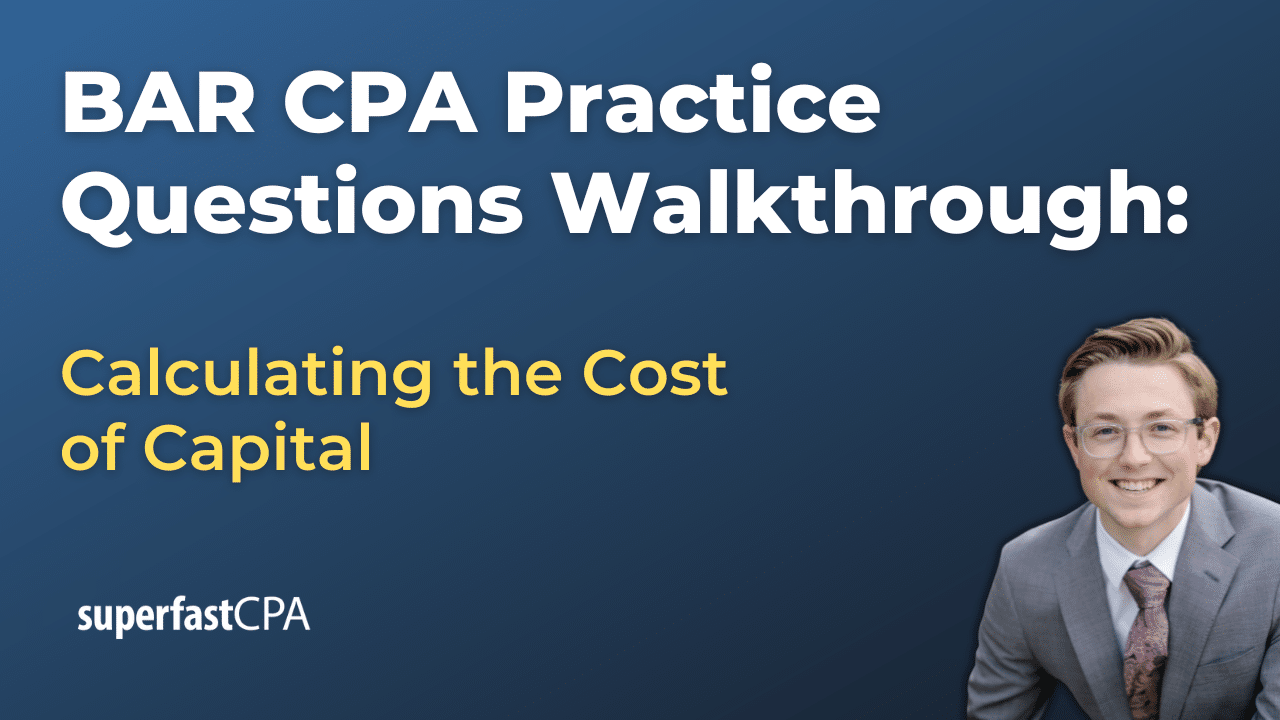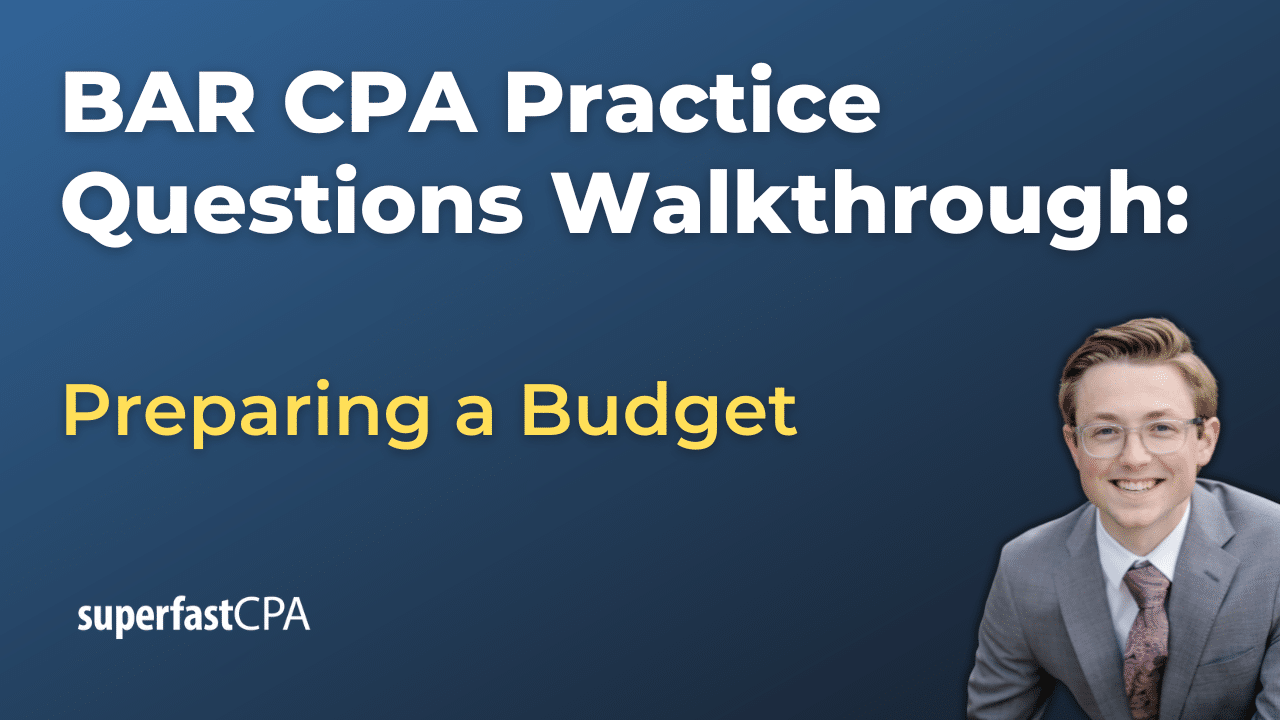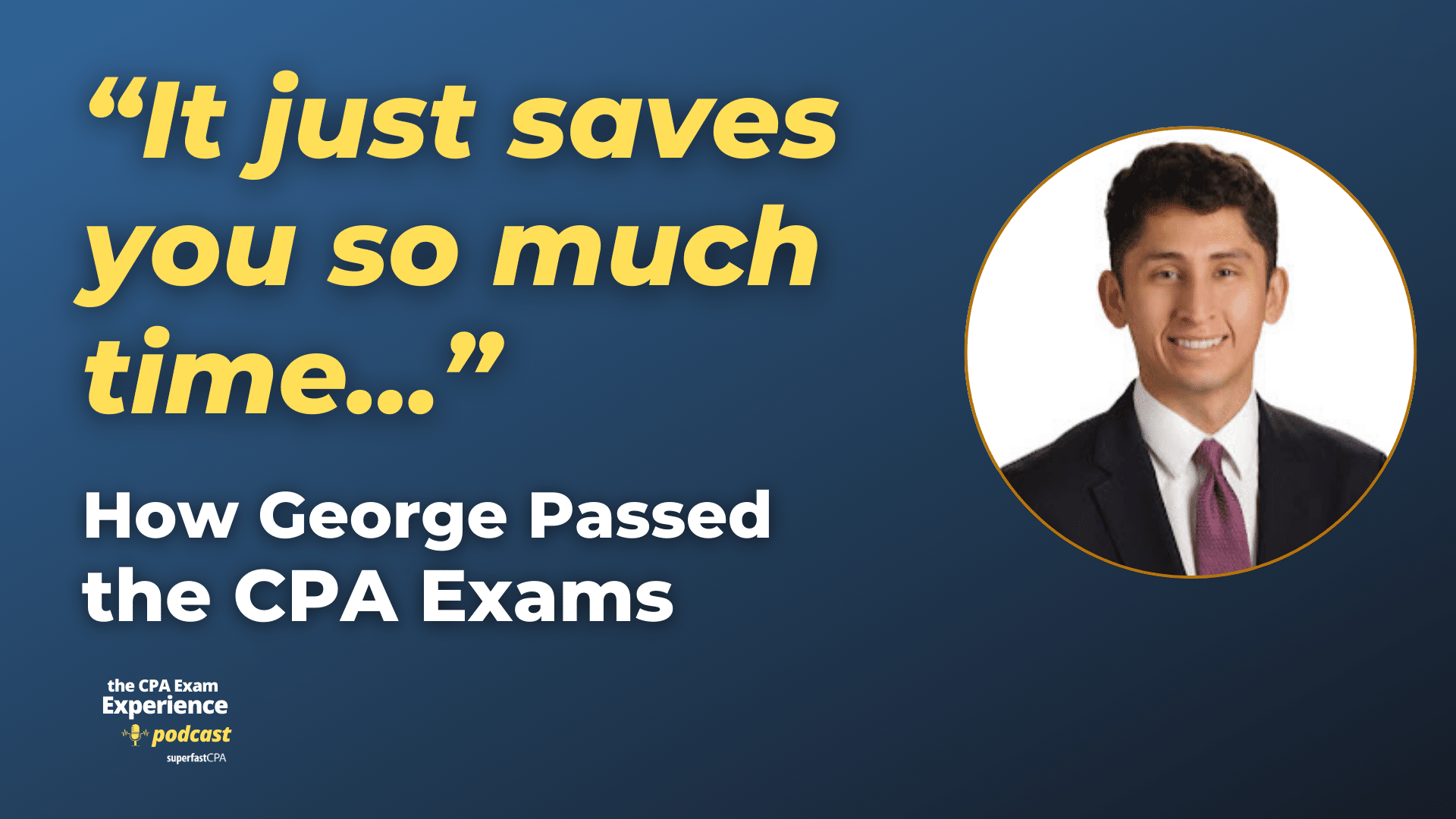In this video, we walk through 3 FAR practice questions teaching about calculating impairment losses on investments measured at amortized cost. These questions are from FAR content area 2 on the AICPA CPA exam blueprints: Select Balance Sheet Accounts.
The best way to use this video is to pause each time we get to a new question in the video, and then make your own attempt at the question before watching us go through it.
Also be sure to watch one of our free webinars on the 6 “key ingredients” to an extremely effective & efficient CPA study process here…
Calculating Impairment Losses on Investments Reported at Amortized Cost
Understanding how to calculate impairment losses on investments reported at amortized cost is crucial for CPA exam candidates. These investments, typically debt securities like held-to-maturity bonds, are carried at their amortized cost—meaning the initial purchase price is adjusted over time for any premiums, discounts, or costs. When the investment’s future cash flows are in doubt, an impairment test may be needed.
What is an Impairment Loss?
An impairment loss occurs when the present value of the expected future cash flows from an investment is less than its amortized carrying amount. This situation arises when an investment’s future cash flows, such as interest payments and principal repayment, are expected to be lower due to changes in the credit quality of the issuer or other factors affecting the cash inflows. The impairment loss reflects the decrease in the investment’s value and is recognized in the income statement.
Steps to Calculate an Impairment Loss
- Determine the Amortized Carrying Amount:
The first step is to identify the amortized cost of the investment at the time of testing for impairment. For bonds purchased at a premium or discount, this means adjusting the initial purchase price by the amount of premium/discount amortization over time. For example, if a bond with a face value of $1,000,000 was purchased at a premium for $1,050,000 and has been held for 3 years, the amortized carrying amount might be $1,030,000 after accounting for amortization. - Estimate the Adjusted Cash Flows:
The next step is to estimate the expected future cash flows, including adjustments for any reductions in interest payments. If the issuer’s financial condition has deteriorated, and the company now expects to receive $10,000 less in annual interest, this reduction needs to be factored into the calculation. For instance, if the bond initially paid $60,000 in annual interest, but due to credit issues, it’s expected to pay only $50,000 annually for the remaining term, the adjusted cash flow will be $50,000 per year. - Discount the Cash Flows Using Present Value Factors:
To determine the present value (PV) of the adjusted cash flows, apply the correct discount rate and PV factors for the remaining periods. Typically, this rate is the bond’s effective interest rate (yield). If interest payments are quarterly or semi-annual, adjust the discount rate and calculate the PV over the appropriate number of periods. For example:- A bond with an annual effective interest rate of 6% would use a 3% rate for semi-annual periods.
- If there are 4 semi-annual periods remaining, use the PV factors for 4 periods at 3%.
- The present value of the adjusted cash flows would be the sum of the PV of the principal and the PV of the reduced interest payments.
- Compare the Present Value to the Amortized Carrying Amount:
After determining the total present value of the adjusted cash flows, compare it to the investment’s amortized carrying amount. If the present value is lower, the difference is recognized as an impairment loss. For example:- Suppose the amortized carrying amount of a bond is $1,030,000, and the present value of the adjusted cash flows is $1,000,000.
- The impairment loss would be $1,030,000 – $1,000,000 = $30,000.
- This impairment loss of $30,000 would be recorded as an expense on the income statement, reducing the carrying amount of the investment to its fair value.
Example: Calculating an Impairment Loss
A company holds a 7-year, $2,000,000 bond purchased at a discount for $1,900,000. The bond pays 5% annual interest, with interest paid semi-annually. After 5 years, the company determines that future interest payments will be $10,000 less per semi-annual period due to the issuer’s financial struggles. The effective interest rate is 5% annually, and 2 years remain until maturity.
Amortized Cost Calculation:
After 5 years, the bond’s amortized cost has risen to $1,960,000 due to the gradual recognition of the initial discount.
Adjusted Cash Flow Estimate:
The original semi-annual interest payment was $2,000,000 × 2.5% (half of 5% annual interest) = $50,000. With the expected reduction, the adjusted interest payment per semi-annual period is now $50,000 – $10,000 = $40,000.
Present Value Calculation:
Since there are 2 years left with semi-annual payments, there are 4 remaining periods (2 years × 2 payments per year). Assume the relevant present value factors for 4 periods are:
- Present Value of $1 for the principal: 0.8885
- Present Value of an Ordinary Annuity of $1 for the adjusted interest payments: 3.7171
Calculate the present value of the remaining cash flows:
- PV of principal = $2,000,000 × 0.8885 = $1,777,000
- PV of adjusted interest payments = $40,000 × 3.7171 = $148,684
Total Present Value:
The total present value of expected future cash flows = $1,777,000 + $148,684 = $1,925,684.
Determine the Impairment Loss:
The amortized cost of the bond is $1,960,000, while the PV of expected cash flows is $1,925,684. Therefore, the impairment loss is:
- Impairment Loss = $1,960,000 – $1,925,684 = $34,316.
The company would recognize a $34,316 impairment loss on its income statement, reflecting the diminished value of the investment due to the reduced cash flow expectations.
Key Takeaways for CPA Exam Candidates
- Focus on the Amortized Carrying Amount: Use the adjusted carrying value, accounting for any discount or premium amortization, as the basis for comparing the investment’s fair value.
- Adjust Cash Flows for Expected Reductions: When future cash flows, like interest payments, are reduced, be sure to use the adjusted amounts for calculating the present value.
- Apply the Correct Present Value Factors: Use the appropriate factors for the effective interest rate and the correct number of remaining periods, considering the payment frequency (quarterly, semi-annual).
- Recognize Impairment as the Difference: The impairment loss is the difference between the amortized carrying amount and the discounted present value of future cash flows. This amount is recorded as a loss on the income statement.













